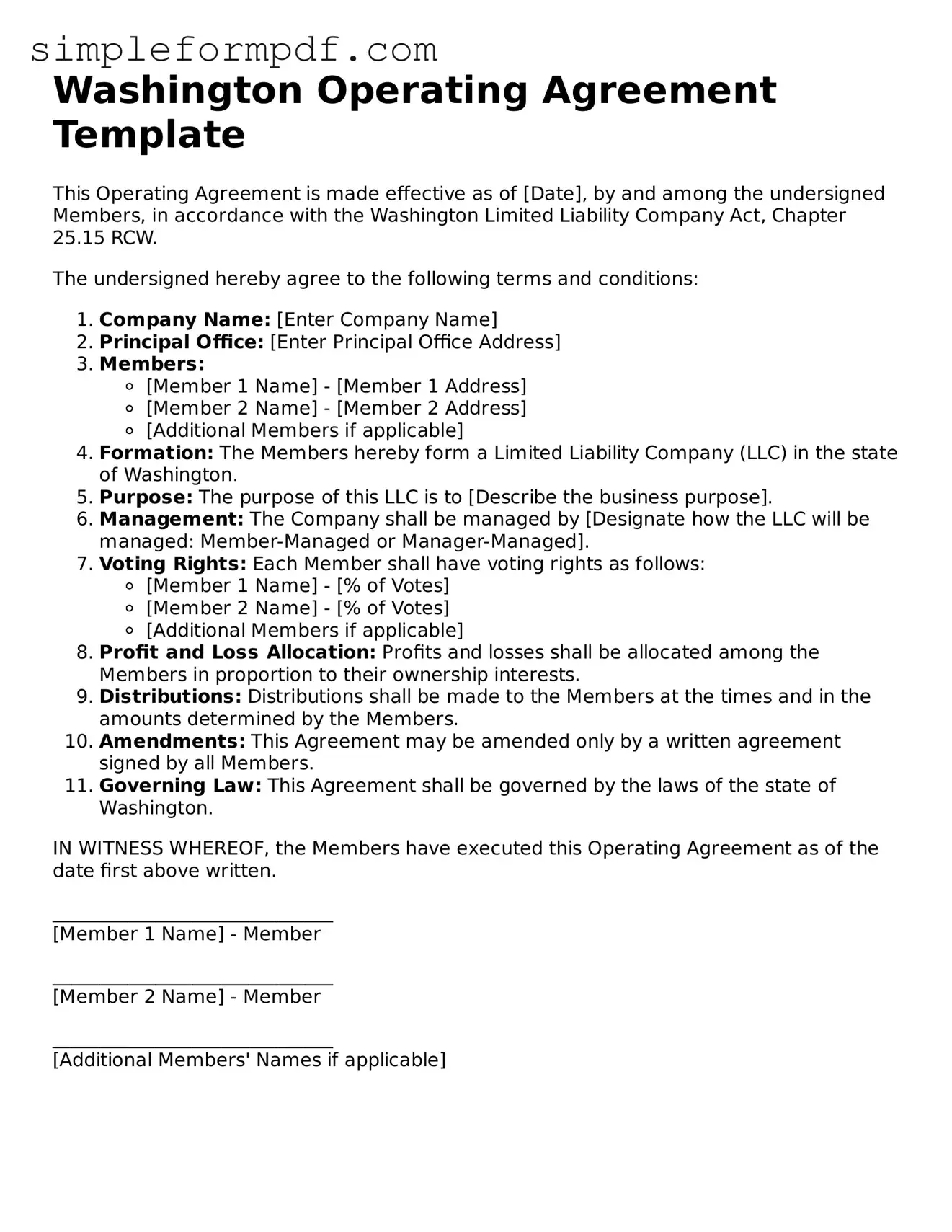Washington Operating Agreement Template
This Operating Agreement is made effective as of [Date], by and among the undersigned Members, in accordance with the Washington Limited Liability Company Act, Chapter 25.15 RCW.
The undersigned hereby agree to the following terms and conditions:
- Company Name: [Enter Company Name]
- Principal Office: [Enter Principal Office Address]
- Members:
- [Member 1 Name] - [Member 1 Address]
- [Member 2 Name] - [Member 2 Address]
- [Additional Members if applicable]
- Formation: The Members hereby form a Limited Liability Company (LLC) in the state of Washington.
- Purpose: The purpose of this LLC is to [Describe the business purpose].
- Management: The Company shall be managed by [Designate how the LLC will be managed: Member-Managed or Manager-Managed].
- Voting Rights: Each Member shall have voting rights as follows:
- [Member 1 Name] - [% of Votes]
- [Member 2 Name] - [% of Votes]
- [Additional Members if applicable]
- Profit and Loss Allocation: Profits and losses shall be allocated among the Members in proportion to their ownership interests.
- Distributions: Distributions shall be made to the Members at the times and in the amounts determined by the Members.
- Amendments: This Agreement may be amended only by a written agreement signed by all Members.
- Governing Law: This Agreement shall be governed by the laws of the state of Washington.
IN WITNESS WHEREOF, the Members have executed this Operating Agreement as of the date first above written.
______________________________
[Member 1 Name] - Member
______________________________
[Member 2 Name] - Member
______________________________
[Additional Members' Names if applicable]
